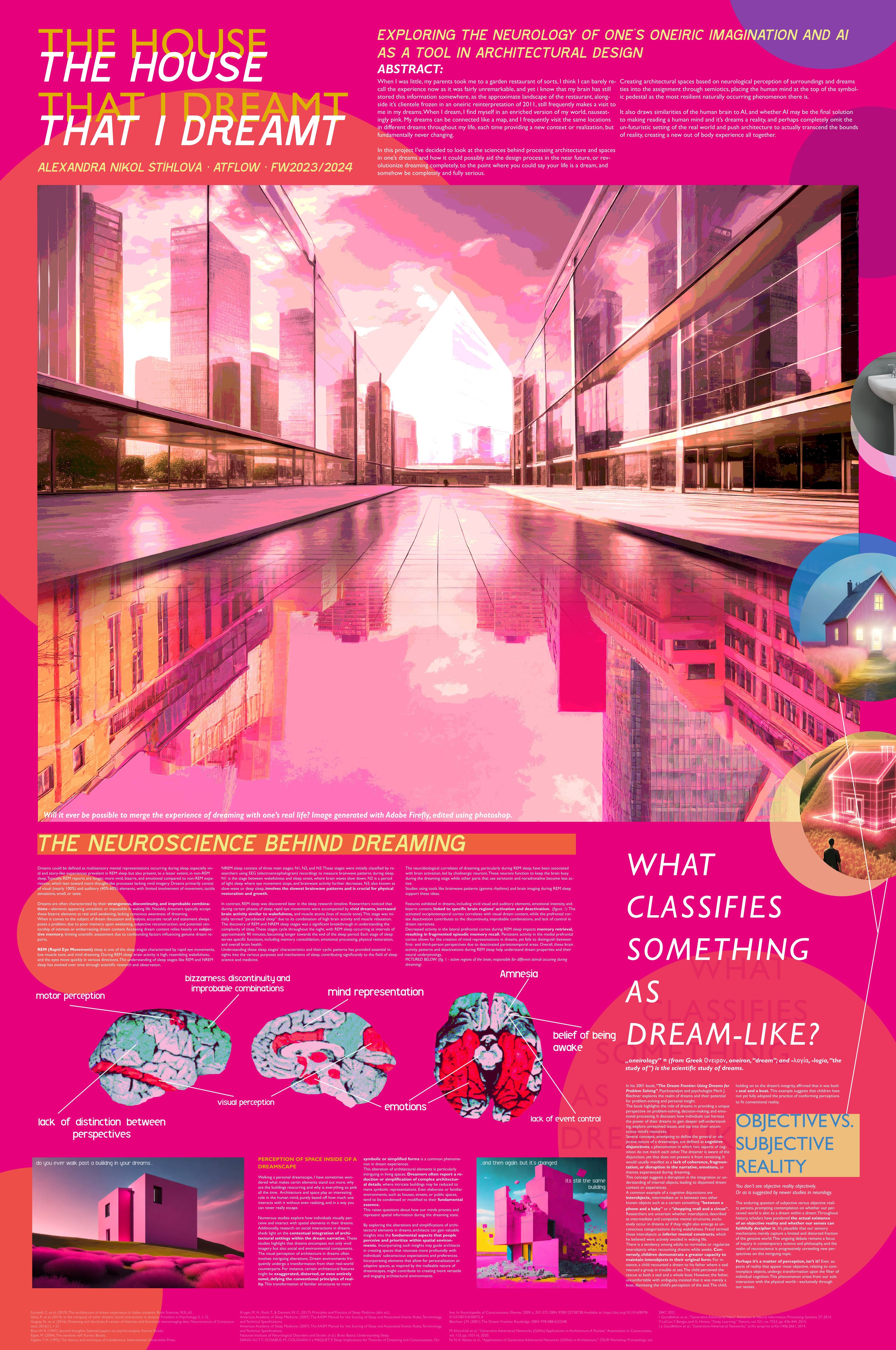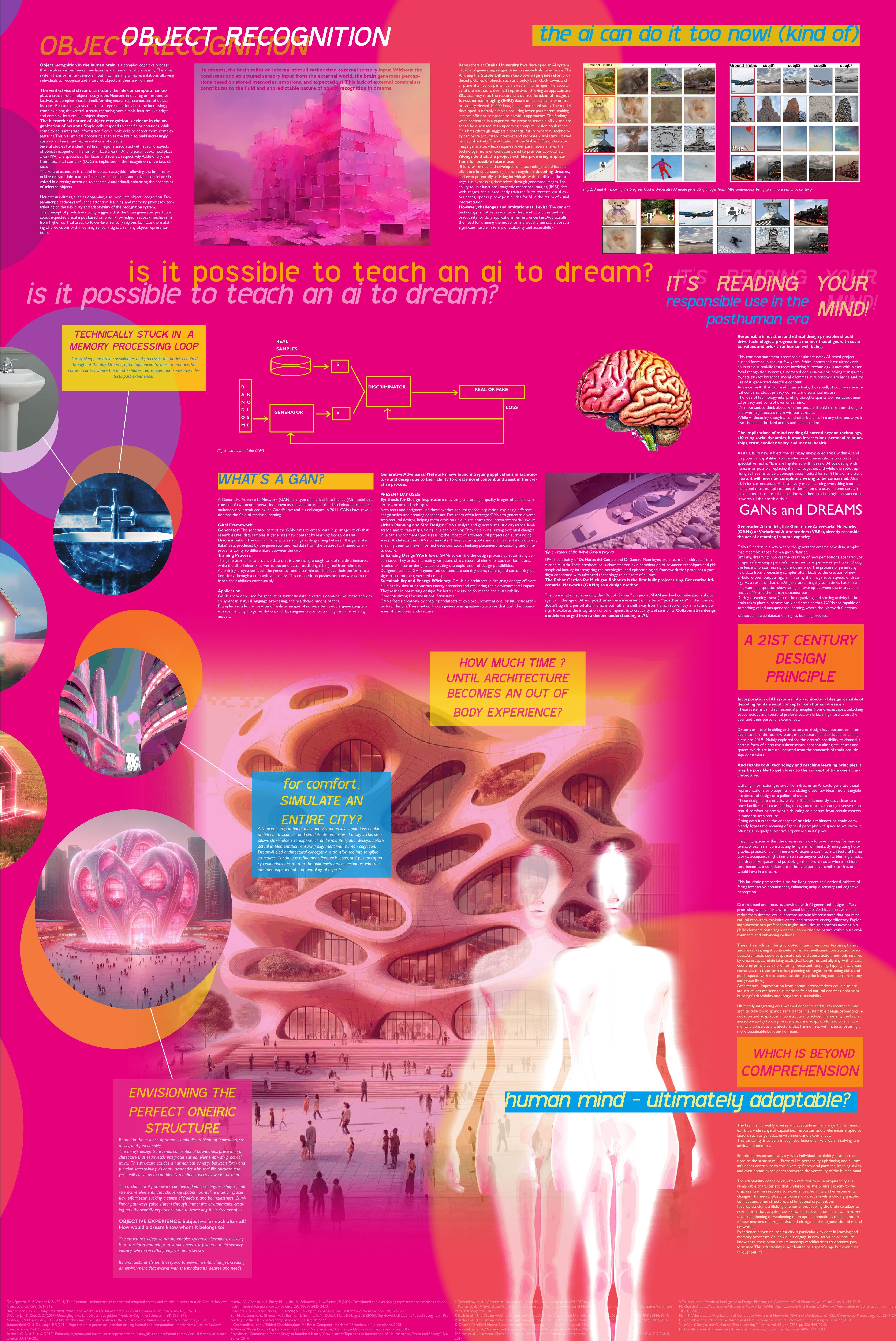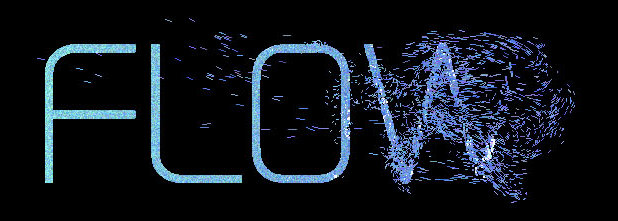Alexandra Nikol Štíhlová | THE HOUSE THAT I DREAMT
ABSTRACT:
When I was little, my parents took me to a garden restaurant of sorts, I think I can barely recall the experience now as it was fairly unremarkable, and yet i know that my brain has still stored this information somewhere, as the approximate landscape of the restaurant, alongside it’s clientele frozen in an oneiric reinterpretation of 2011, still frequently makes a visit to me in my dreams. When I dream, I find myself in an enriched version of my world, nauseatingly pink. My dreams can be connected like a map, and I frequently visit the same locations in different dreams throughout my life, each time providing a new context or realization, but fundamentally never changing. In this project I’ve decided to look at the sciences behind processing architecture and spaces in one’s dreams and how it could possibly aid the design process in the near future, or revolutionize dreaming completely, to the point where you could say your life is a dream, and somehow be completely and fully serious. Creating architectural spaces based on neurological perception of surroundings and dreams ties into the assignment through semiotics, placing the human mind at the top of the symbolic pedestal as the most resilient naturally occurring phenomenon there is. It also draws similarities of the human brain to AI, and whether AI may be the final solution
to making reading a human mind and it’s dreams a reality, and perhaps completely omit the
un-futuristic setting of the real world and push architecture to actually transcend the bounds
of reality, creating a new out of body experience all together.
ENVISIONING THE PERFECT ONEIRIC STRUCTURE:
Rooted in the essence of dreams, embodies a blend of innovation,
creativity, and functionality. The thing’s design transcends conventional boundaries, presenting
architecture that seamlessly integrates surreal elements with practical utility. This structure exudes a harmonious synergy between form and function, intertwining visionary aesthetics with real life purpose and yet it will cause us to completely redefine spaces as we know them. The architectural framework combines fluid lines, organic shapes, and interactive elements that challenge spatial norms. The interior spaces flow effortlessly, evoking a sense of freedom and boundlessness. Curvilinear pathways guide visitors through immersive environments,
creating an otherworldly experience akin to traversing their dreamscapes.
OBJECTIVE EXPERIENCE:
Subjective for each after all?
How would a dream know whom it belongs to?
The structure’s adaptive nature enables dynamic alterations, allowing it to transform and adapt to various needs. It fosters a multi-sensory journey, where everything engages one’s senses. Its architectural elements respond to environmental changes, creating an environment that evolves with the inhabitants’ desires and needs.
A 21ST CENTURY DESIGN PRINCIPLE:
Incorporation of AI systems into architectural design, capable of
decoding fundamental concepts from human dreams -
These systems can distill essential principles from dreamscapes, unlocking subconscious architectural preferences, while learning more about the user and their personal experiences.
Dreams as a tool in aiding architecture or design have become an interesting topic in the last few years, most research and articles not taking place pre-2019. Mainly explored for the dream’s possibility to channel a certain form of a creative subconscious, conceptualizing structures and spaces, which are in turn liberated from the standards of traditional design constraints. And thanks to AI technology and machine learning principles it may be possible to get closer to the concept of true oneiric architecture. Utilizing information gathered from dreams, an AI could generate visual
representations or blueprints, translating these raw ideas into a tangible architectural design or a pallet of shapes. These designs are a novelty which still simultaneously stays close to a once familiar landscape, shifting though memories, creating a sense of potential comfort or removing a daunting cold nature from certain aspects in modern architecture. Going even further, the concept of oneiric architecture could completely bypass the meaning of general perception of space as we know it, offering a uniquely subjective experience in its’ place. Imagining spaces within the dream realm could pave the way for innovative approaches in constructing living environments. By integrating holographic projections or immersive AI experiences into architectural frameworks, occupants might immerse in an augmented reality, blurring physical and dreamlike spaces and possibly go the absurd route where architecture becomes a complete out of body experience, similar to that, one would have in a dream.
This futuristic perspective aims for living spaces as functional habitats offering interactive dreamscapes, enhancing unique sensory and cognitive perception.
|


|

